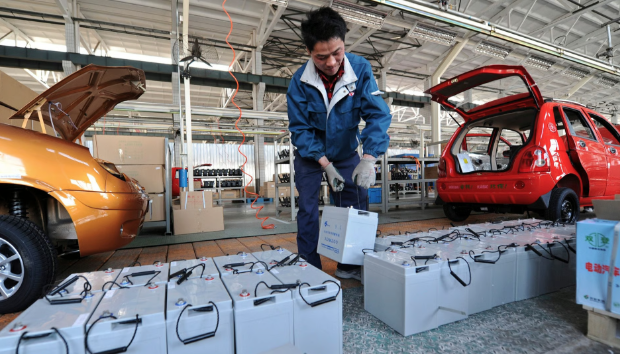 Chinese electric vehicle battery makers are frantically building lithium-ion battery gigafactories/HANDOUT
Chinese electric vehicle battery makers are frantically building lithium-ion battery gigafactories/HANDOUTChina is cementing its status as the global leader in electric mobility, with near-universal satisfaction among domestic users.
A report by global consultancy Roland Berger found that up to 99 per cent of Chinese battery electric vehicle (BEV) owners would consider buying another BEV in the future, a level of confidence unmatched anywhere else in the world.
The finding, part of Roland Berger’s 2025 EV Charging Ecosystem Index, is based on a global survey of 12,000 respondents conducted in the second quarter of this year.
According to China Daily, the consultancy said the results reflect China’s strong and consistent policy support for electrification, a mature ecosystem driven by homegrown technology leaders, and consumers’ enthusiasm for innovation and digital mobility.
While global EV adoption continues to expand, the report highlights a growing divergence among major markets. Worldwide, EV penetration — including both battery electric and plug-in hybrid models — rose from 20 per cent in 2023 to 25 percent in 2024.
“China led by a wide margin with its EV penetration surging from 36 percent to 49 percent over the same period, reinforcing its position as the world’s largest and most dynamic EV market,” the report states.
Roland Berger attributed China’s leadership to its rapidly expanding vehicle fleet and accelerated development of charging infrastructure.
The findings note that China’s EV ecosystem, spanning manufacturing, energy supply, and digital service, has reached a level of integration that few other markets can match.
It highlights that China's EV ecosystem, from car manufacturing to energy supply and digital services, has achieved a level of integration that few other markets can match.
In contrast, Europe's momentum has faltered. Modest gains in countries such as Belgium, the United Kingdom, and Portugal were offset by stagnation in France and Italy.
A second consecutive decline in Germany followed the government's withdrawal of BEV purchase subsidies at the end of 2023.
“The European Union's recent relaxation of emissions targets may slow the pace of transition in the near term, though electrification remains the long-term direction of travel for the continent's automotive industry,” the consultancy noted.
Across the Atlantic, adoption is progressing more gradually.
“The EV penetration rate in the United States went up from 10 percent to 11 percent in 2024, in Canada from 9 percent to 15 percent, and in Mexico from 1 percent to 2 percent, suggesting steady but incremental change,” the report states.
Another finding from the report points to a subtle yet important shift in consumer motivation. Environmental awareness remains a key driver of EV purchases, but economic considerations — including lower energy and maintenance costs — are becoming influential.
In Asia and North America, "economic efficiency" has surpassed "environmental benefits" as the main reason for choosing an EV, according to Roland Berger.
The consultancy said this reflects both growing market maturity and consumer confidence in the total cost advantages of electric mobility.
Around 80 percent of EV users surveyed said they drive more than 10,000 kilometers per year, while 74 percent use their vehicles at least four days a week, a clear sign that EVs have become a trusted option for everyday use rather than a niche alternative.
As EV ownership expands, charging infrastructure is emerging as the next decisive factor.
Although 85 percent of global BEV users have access to home charging, nearly half of all charging sessions now take place elsewhere.
Shopping malls are the most common destination, while charging speed remains the biggest complaint among users worldwide.
China, however, stands apart once again. Only about 40 percent of Chinese BEV users expressed dissatisfaction with public charging speed, a result of strong government backing for high-power charging facilities and continuous network upgrades.
Meanwhile, over a third of respondents in China felt public charging had become more convenient in the last six months, a higher percentage than in other regions.
In July, National Development and Reform Commission released a notice urging local authorities to prioritize high-power charging facilities, particularly at highway service areas.
The plan aims to double the service capacity of EV charging infrastructure from 2025 to 2027.
It said there will be 28 million charging facilities nationwide by the end of 2027, which will provide more than 300 million kilowatts of public charging capacity, sufficient to meet the needs of 80 million EVs.
China has seen the rise of a robust public charging market, dominated by five operators: Teld, Star Charge, YKC, State Grid, and Xiaoju Charge. Together they account for about 70 per cent of all public charging stations, giving the sector both scale and stability.


















